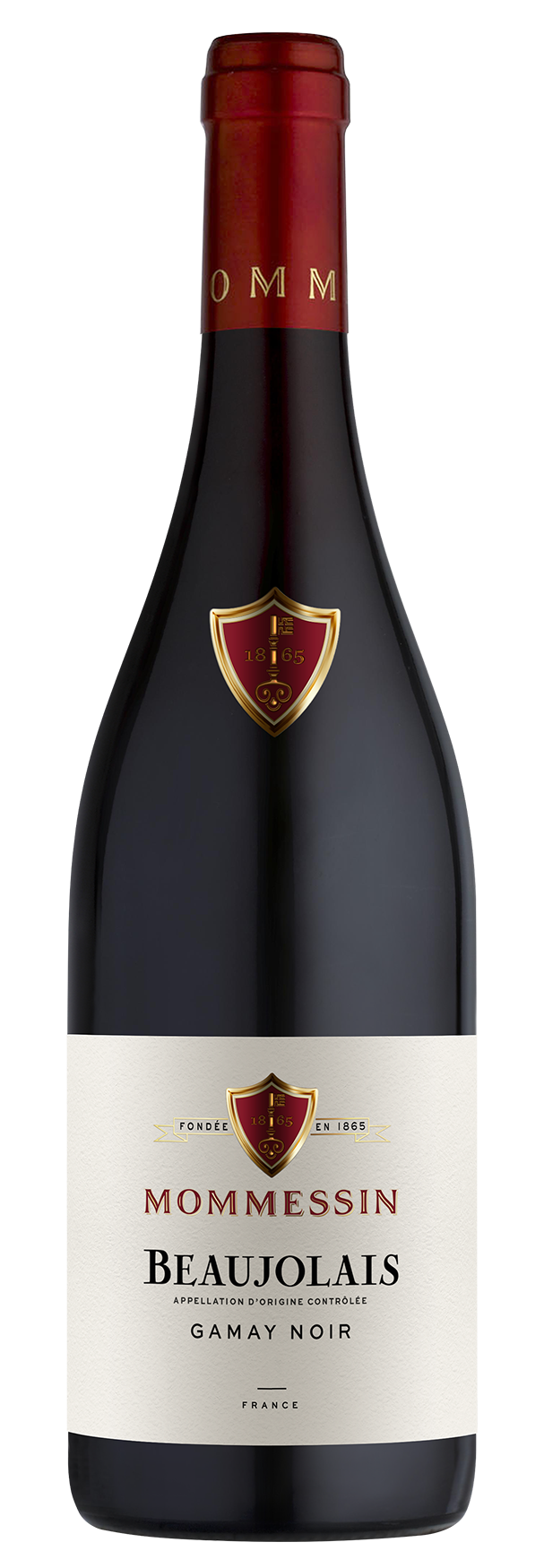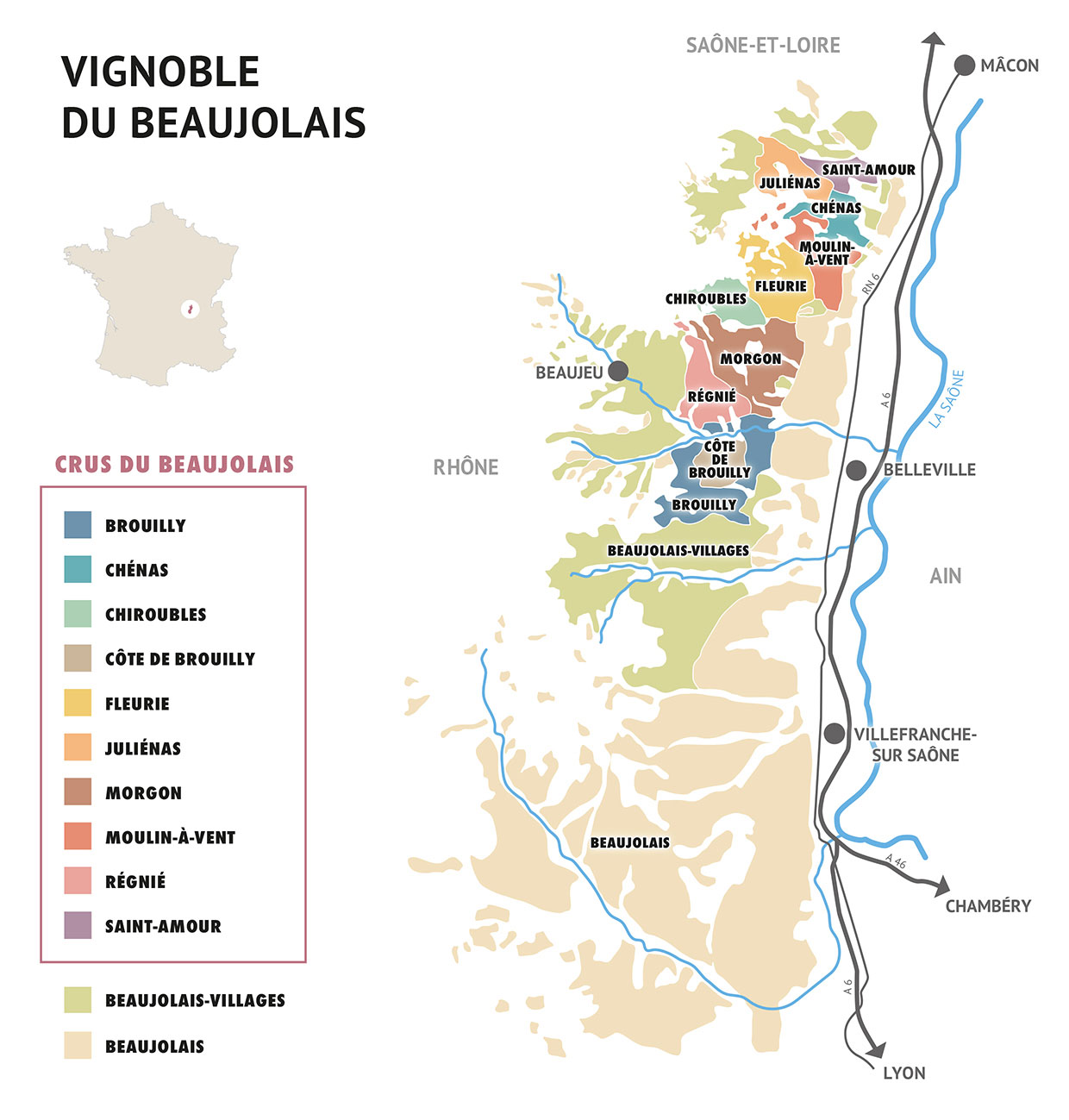Grape varietal
Black Gamay (Gamay Noir) with white juice.
Tasting notes
Colour: Elegant ruby red with purple reflections.
Nose: A fresh and fruity bouquet wine with aromas of small red fruits (strawberry).
Palate: A fruity and lively taste, round and supple in the mouth, with good balance and smoothness.
Serving suggestions
It should be served between 11 and 13°C. (52-55°F.)
Food and wine pairing
A pleasant, friendly wine, to be appreciated at any time of the day, with picnics, before meals, or with cold meats and starters.
Ageing potential
Beaujolais is a highly aromatic wine that could be drunk to enjoy its fruity bouquet. Best between one to 3 years.
Terroir
Beaujolais A.O.C wines are mainly produced in the south of Villefranche-sur-Saône. The vineyard spreads over 9 700 hectares. It is the most important production area representing 50% of the total production. Only one variety of vine is used in the Beaujolais vineyard : black gamay with white juice which produces red wine. The region also has the highest density of plantations (between 9 000 and 13 000 vines per hectare) which, together with a strict trimming of the vines (12 buds max.), limits the yield. The Beaujolais wine making method is unique and combines ancestral method with modern technique.
Soils made of chalky clay and granite. Average age of vines : 40 years.
Vinification and maturing
Manual harvests. Traditional semi-carbonic Beaujolais vinification during 12 to 15 days to ensure good extraction, with temperatures held at 22-25°C (71-77°F) to protect the fruit of the Gamay grape. Ageing in vats.
Vintage : 2024
The winter of 2023-2024 was the 3rd warmest since 1900, with a particularly mild February. Spring was marked by heavy rainfall, with a notable lack of sunshine. Despite these conditions, temperatures remained above normal. Summer alternated between hot and cool spells, with hot spells in July. These climatic variations complicated plant health management in the vineyards, but winegrowers were able to keep the situation under control.
Yields for the 2024 harvest are expected to be low and very heterogeneous, with some plots suffering from coulure and millerandage. The first pruning began in early September. Harvesting was spread over three weeks, finishing at the end of September in the latest-ripening areas.
The reds have notes of raspberry, black cherry, pear and floral scents such as lily of the valley. Initial tastings reveal fruity, elegant, supple wines with a ruby colour. The range of aromas is broad, giving an impression of deliciousness on the palate, with a lovely freshness and pleasant complexity.
The white wines are remarkably fresh and elegant. Their bouquet offers citrus notes, enhanced by subtle floral touches and aromas of pear and peach. The wine is structured by a pronounced minerality, with a lively, unctuous texture.




